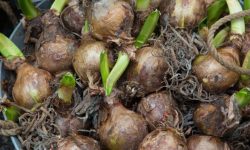Tulips are among the most cherished spring-flowering bulbs, known for their vibrant colors and elegant forms. Whether planted in large garden beds or containers on patios, they never fail to bring a sense of renewal and beauty after a long winter. Understanding the best time and technique to plant tulip bulbs plays a crucial role in how successfully they bloom. While fall is the traditional planting season, many gardeners also explore spring planting with adjusted expectations.
This guide will walk you through both seasonal approaches to ensure your tulip bulbs yield the most stunning results possible.
Understanding Tulip Bulbs and Their Growth Cycle

Before planting tulip bulbs, it’s important to understand how they grow. Tulip bulbs are storage organs that contain all the energy and nutrients the plant needs to sprout, bloom, and complete its life cycle. These bulbs go through a dormancy period during summer, an active root-growing phase in fall, and a blooming phase in spring. If planted at the right time, tulips take root in cool soil, develop underground systems during winter, and send up their vibrant blossoms as temperatures rise.
The growth cycle begins once the bulb senses cool soil temperatures, typically below 55°F (13°C). During this time, roots develop even though the top of the plant remains dormant. Cold temperatures are necessary for the internal chemical processes that trigger flowering. This process, known as vernalization, is why fall planting is ideal in most climates. Still, with proper preparation and cooling, spring planting can also yield blooms, especially in colder zones.
Choosing the Right Tulip Varieties for Your Climate
Not all tulips are created equal. Different cultivars perform better depending on your regional climate, soil type, and seasonal conditions. Early-season tulips bloom sooner in spring and are more likely to handle early chills, making them suitable for spring planting. Late-blooming varieties require a longer cold period and are better suited to fall planting. Triumph, Darwin Hybrid, and Fosteriana tulips are among the most reliable varieties for consistent garden performance.
If you live in a warmer region where winters are mild, you may need to refrigerate tulip bulbs before planting to simulate the cold needed for vernalization. This is especially important for gardeners in USDA zones 8 through 10. Keeping the bulbs in a breathable paper bag in the refrigerator (away from fruits like apples, which release ethylene gas) for at least 10 to 12 weeks can help prepare them for planting in late winter or early spring.
Preparing Your Garden for Planting Tulip Bulbs
Garden preparation is key to successful tulip blooms. Tulips thrive in areas that receive full sunlight for at least six hours per day. Well-drained soil is essential to prevent bulb rot, which can occur in soggy or compacted soil. To improve drainage, consider amending your garden bed with compost, sand, or well-aged organic matter. Slightly sandy, loose soil with a neutral to slightly acidic pH is ideal.
The area you choose should be free of standing water and protected from strong winds, which can snap the tall stems of tulips once they bloom. If planting in containers, ensure your pots have adequate drainage holes and use a lightweight potting mix formulated for bulbs or flowering plants. Raised beds can also be effective for improving drainage in areas with heavy clay soils.
When to Plant Tulip Bulbs in Fall for Best Performance
The ideal time to plant tulip bulbs in fall is when nighttime temperatures consistently drop below 50°F (10°C) but before the ground freezes. This usually falls between late September and early November, depending on your location. Planting at this time allows bulbs to establish a healthy root system before winter sets in, providing the energy needed for vigorous spring blooms.
Avoid planting too early, as bulbs may sprout prematurely in warm soil, leading to frost damage. Conversely, planting too late risks frozen ground, which can inhibit root development and lead to weak growth or no blooming at all. In regions with mild winters, timing becomes more flexible, but chilling requirements must still be met through refrigeration or natural cold exposure.
How to Plant Tulip Bulbs in Fall Step by Step
Begin by digging a hole about three times as deep as the bulb is tall, typically around 6 to 8 inches. This depth protects the bulb from temperature fluctuations and ensures a strong stem. Place the bulb with the pointed end facing upward, which is where the stem will emerge. Space bulbs approximately 4 to 6 inches apart to give each plant enough room to grow and access nutrients.
Backfill the hole with loose soil, gently pressing it down to eliminate air pockets. Water the area thoroughly after planting to help settle the soil and initiate root growth. Applying a light mulch layer can help moderate soil temperatures and reduce weed growth, but avoid heavy mulch that may trap excess moisture and cause rot.
What to Expect from Fall-Planted Tulip Bulbs
Once planted in fall, tulip bulbs remain largely dormant above ground throughout winter. Underground, however, they are busy developing roots that anchor them in place and draw in nutrients. As days grow longer and temperatures rise in spring, green shoots will break through the soil, often followed by vibrant blooms within a few weeks.
Fall-planted tulips tend to produce the most reliable and robust blooms because they experience a full winter of natural chilling. These flowers typically bloom in early to mid-spring, depending on the variety and local climate. After blooming, the foliage remains green for several weeks to photosynthesize and store energy in the bulb for the next growing season.
Planting Tulip Bulbs in Spring: What You Should Know
Spring planting is generally considered a backup plan for tulips, but it can still yield satisfying results under the right conditions. Spring-planted bulbs may not perform as well as those planted in fall, but with proper care, you can still enjoy beautiful blooms, especially in late spring or early summer. These bulbs should ideally be pre-chilled for at least 12 weeks to simulate winter.
Plant tulip bulbs in spring as soon as the soil is workable and not frozen. Choose bulbs that are firm and healthy, with no signs of mold or soft spots. Avoid bulbs that have already sprouted significantly, as they may not adjust well to being planted and could fail to thrive. Spring planting works best in colder regions, where the remaining cool temperatures support delayed blooming.
Adapting Spring Planting Methods for Better Results
To increase the chances of success when planting in spring, use the same planting depth and spacing as in fall. Enrich the soil with compost to provide immediate nutrients, as spring-planted bulbs have less time to establish roots before blooming. Water the area thoroughly after planting and keep the soil moist but not soggy during the growing period.
Some gardeners choose to plant tulip bulbs in containers during spring, allowing them to control the soil temperature and moisture more precisely. This method can be particularly useful in unpredictable climates or for those who want to move the tulips indoors or into protected outdoor areas. Expect blooms to appear later and be slightly shorter-lived, especially in warmer regions.
Caring for Tulips After Planting
Once tulips emerge, maintaining proper care is essential to prolong blooming and encourage strong foliage growth. Ensure that the plants receive sufficient sunlight, as this helps fuel photosynthesis and strengthens the bulbs. Water only when the soil is dry, as overwatering can lead to bulb rot. Fertilizing in early spring with a bulb-specific formula can promote vibrant blooms.
After the flowers fade, allow the foliage to remain intact until it turns yellow and dies back naturally. This process is vital for the bulb to absorb energy for the next year. Do not cut back the leaves prematurely, even if they look unsightly. Deadheading the flowers (removing the spent blooms) can also prevent the plant from wasting energy on seed production.
Storing and Replanting Tulip Bulbs for Future Seasons
In colder climates, tulips are often treated as perennials and left in the ground year-round. However, in warmer zones or when soil conditions are less than ideal, lifting and storing the bulbs after foliage dies back may help preserve their vigor. Gently dig up the bulbs, remove excess soil, and store them in a cool, dry place with good air circulation.
Label the bulbs and inspect them periodically for signs of mold or decay. Replant in the fall following the same depth and spacing guidelines. Over time, tulip bulbs can become crowded and may produce fewer flowers, so dividing and replanting them every few years can rejuvenate your display.
Common Mistakes to Avoid When Planting Tulips
Many gardening disappointments with tulips stem from preventable mistakes. Planting bulbs in poorly drained soil often results in rotting, especially during wet winters. Choosing the wrong planting depth can cause frost damage or weak stem growth. Failing to chill bulbs in warm climates may lead to little or no flowering.
Other errors include planting bulbs too close together, which can lead to competition and disease spread. Not providing enough sunlight can stunt growth and produce fewer or shorter blooms. Skipping post-bloom care by cutting leaves too early will limit next year’s flower development. Paying attention to these common pitfalls can make a significant difference in your tulip-growing success.
The Long-Term Beauty of Tulips in Your Garden
When done correctly, planting tulip bulbs either in fall or spring offers a rewarding display of colors, textures, and seasonal charm. These versatile flowers come in a wide range of shapes, from classic cups to ruffled doubles, and colors spanning from bold reds and purples to soft pastels. Incorporating tulips into your landscape design adds layers of interest and creates a dynamic transition from winter to spring.
By understanding the timing, soil needs, climate adaptations, and post-planting care, gardeners of all skill levels can enjoy healthy, vigorous tulip blooms. While fall remains the gold standard for planting, spring planting can serve as a valuable backup or complement, especially in varied climates or for late-bought bulbs. With proper planning and attention to detail, tulips will continue to bring delight year after year.
FAQ about How to Plant Tulip Bulbs
What is the best time to plant tulip bulbs?
The best time to plant tulip bulbs is in the fall, when soil temperatures drop below 55°F (13°C), but before the ground freezes.
Can I plant tulip bulbs in the spring?
Yes, tulip bulbs can be planted in early spring if they have been pre-chilled for at least 10–12 weeks to simulate winter conditions.
How deep should I plant tulip bulbs?
Tulip bulbs should be planted about 6 to 8 inches deep, with the pointed end facing upward, to ensure strong stem development.
Do tulip bulbs need sunlight?
Yes, tulips require full sun for at least six hours per day. They thrive best in sunny locations with well-drained soil.
Can I plant tulip bulbs in containers?
Tulip bulbs grow well in containers if proper drainage is provided. Use quality potting mix and place containers in a sunny location.
How long do tulips take to bloom after planting?
Fall-planted tulips bloom in early to mid-spring. Spring-planted tulips may bloom later, often in late spring or early summer.
Should I water tulip bulbs after planting?
Yes, water thoroughly after planting to help bulbs settle and begin root development. Avoid overwatering, which may cause rot.
Conclusion
Planting tulip bulbs in fall or spring can lead to stunning seasonal displays when done with care and timing. By understanding the needs of the bulbs, preparing the soil properly, and adjusting your methods based on the planting season, you can enjoy vibrant tulip blooms year after year. Whether you’re planning a colorful spring garden or adding charm to your containers, tulips are a rewarding choice for any gardener.






